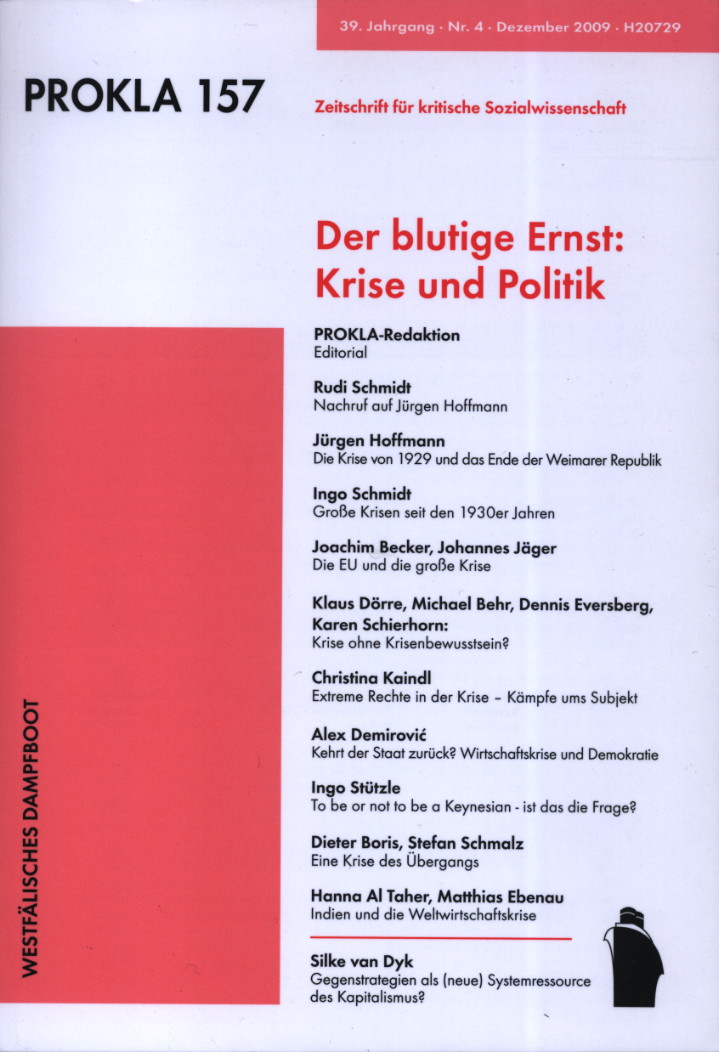Große Krisen seit den 1930er Jahren
DOI:
https://doi.org/10.32387/prokla.v39i157.409Schlagworte:
Krise, Depression, Wirtschaft, Hegemonie, LuxemburgAbstract
The Great Depression of the 1930s was a breakthrough to ‘One Big Wave’ of accumulation under US hegemony. This wave reached its crest with the stagflation crisis of the 1970s, which also saw a first challenge to US hegemony, and has reached its limits in the present crisis. Though no successor hegemon is in sight, the US has increasing difficulties to lead the world economy out of the crisis. Theoretically, the article draws on Rosa Luxemburg’s theory of capitalist accumulation. Considering the criticisms that her original theory met, a slightly modified version is presented here. From this angle, complementary processes of outward and inward expansion of capital marked the period between the 1930s and the 1970s. The following period saw a shift towards outward expansion, namely into former developmental states in the South and formerly state socialist countries in the East, and financialization. The latter is a symptom of continued limits to capital accumulation, eventually leading to financial crisis and a Great Recession in 2008/09.






